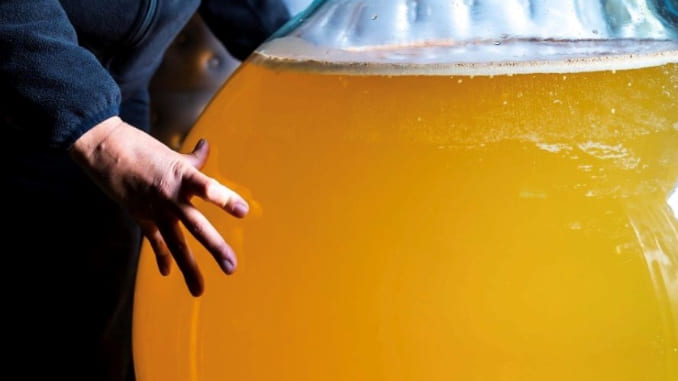Concrete and Amphora, Sure… But Glass?
Photo courtesy of Wineglobe
Drinking wine made from grapes that spend a lot of time hanging around oak vessels often feels a bit like listening to a comedian who idolizes Rodney Dangerfield. It’s hard not to roll your eyes occasionally at the forehead-slapping lack of subtlety.
Winemaking, in recent decades, has turned a corner. Both winemakers and wine lovers are increasingly inspired by wines that are made with purity—organically grown grapes, less intervention in the cellar—and that transparently reflect the terroir. Land over hand.
A winemaker’s most obvious fingerprint is often made by their choice of vessel.
“The vessel a winemaker chooses to ferment and age their wines in can have an enormous impact on the final product,” says traveling winemaker Carlo DeVito, also author of Drink the Northeast: The Ultimate Guide to Breweries, Distilleries, and Wineries in the Northeast. “Over the years, I’ve worked with everything, from oak, to steel, to clay, to glass. They each have their purpose, but I will say that if you want a completely clean fermentation and you want to know what a grape truly tastes like, fermenting and aging it in glass will you get you there.”
-

-

-

-

-

-

-

-

-

-

-

-

-

-

-

-

-

-

-

-

-

-

-

-

-

-

-

-

-

-

-

-

-

-

-

-

-

-

-

-








































